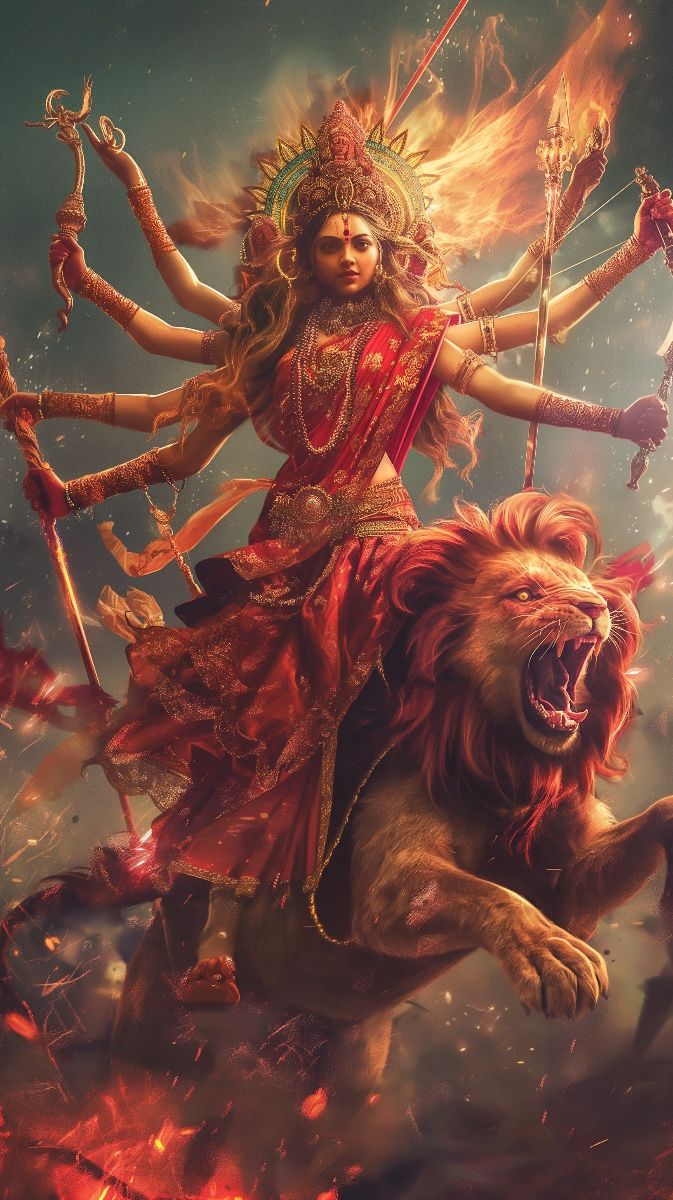10 Powerful Facts About Goddess Durga: History, Significance & Daily Impact
Introduction
Goddess Durga is one of the most revered deities in Hinduism, symbolizing power, protection, and righteousness. She is the ultimate embodiment of Shakti (divine feminine energy) and is worshipped as the destroyer of evil and the protector of the universe. Her significance is deeply ingrained in Indian culture, influencing religious practices, festivals, and even daily life. This article explores Durga’s biography, historical roots, impact on society, observance, and key facts that highlight her spiritual importance.
Biography of Goddess Durga
Durga is depicted as a fierce warrior goddess with multiple arms, each holding a weapon gifted by different gods. She is often seen riding a lion or tiger, symbolizing her strength and fearlessness. According to Hindu mythology, she was created by the combined energies of Brahma, Vishnu, and Shiva to defeat the demon Mahishasura, who could not be killed by any male deity.
Key Attributes of Durga:
- Ten Arms: Representing her ability to multitask and destroy evil from all directions.
- Lion/Tiger Mount: Symbolizing strength and determination.
- Weapons: Each weapon signifies different divine powers she possesses.
- Third Eye: Represents wisdom and spiritual insight.
Historical Significance of Goddess Durga
Durga has been worshipped for thousands of years, with references found in ancient Hindu scriptures like the Devi Mahatmya (Durga Saptashati) and Markandeya Purana.
Key Historical Insights:
- Vedic Age (1500–500 BCE): Early references to divine feminine energy (Shakti) appear in Hindu texts.
- Puranic Period (300–1200 CE): The story of Durga’s battle against Mahishasura became central in Hindu mythology.
- Medieval India: Durga Puja gained prominence, especially in Bengal.
- Modern Era: Durga continues to be celebrated worldwide, particularly in Indian communities.
The Impact of Durga on Daily Life
Goddess Durga’s presence is not limited to religious scriptures; her influence extends to everyday life.
How Durga Shapes Daily Life:
- Moral Guidance: She embodies courage, righteousness, and protection, inspiring people to stand up against injustice.
- Empowerment of Women: Durga symbolizes women’s strength and leadership, inspiring feminist movements and social reforms.
- Festivals & Rituals: Many households offer daily prayers to Durga, seeking her blessings for protection and success.
- Mantras & Meditation: Chanting Durga mantras like “Om Dum Durgaye Namah” is believed to provide strength and remove obstacles.
- Symbols in Culture: Schools, businesses, and organizations use her imagery to promote values of resilience and justice.
Festivals & Observance of Goddess Durga
Durga is worshipped in various forms across India, with Navratri and Durga Puja being the most significant festivals.
Major Festivals Dedicated to Durga:
- Navratri (Nine Nights of Worship): Celebrated twice a year, focusing on different forms of Durga.
- Durga Puja (Bengal & Eastern India): A grand festival where beautifully crafted idols of Durga are worshipped before being immersed in water.
- Maha Ashtami & Vijayadashami: The eighth and tenth days of Navratri, marking the climax of Durga’s victory over evil.
Important Facts About Goddess Durga
- The Durga Saptashati (Devi Mahatmya) consists of 700 verses describing her powers and glory.
- She has nine forms, collectively known as Navadurga, each representing different aspects of her divine power.
- Kolkata’s Durga Puja has been recognized as an Intangible Cultural Heritage by UNESCO.
- Mahishasuramardini Stotra, a famous hymn, glorifies her victory over evil.
- The lion she rides represents Dharma (righteousness), while Mahishasura represents Adharma (evil).
Significance of Durga in Society
Goddess Durga plays a vital role in shaping Indian society’s spiritual and cultural landscape.
Why Durga is Important to Society:
- Women’s Empowerment: Durga is seen as the ultimate symbol of strength and equality.
- Moral Strength: She inspires people to uphold truth, justice, and righteousness.
- Social Harmony: Her festivals unite people across different communities and religions.
- Environmental Awareness: The immersion of eco-friendly Durga idols has become a movement to protect nature.
Wishing and Blessings Related to Durga
During Durga Puja and Navratri, devotees exchange warm wishes such as:
- “May Goddess Durga bless you with strength and wisdom.”
- “Wishing you a joyous Navratri filled with devotion and prosperity.”
- “Jai Mata Di! May Durga Maa protect you and your family.”
- “Happy Durga Puja! May the goddess remove all obstacles from your life.”
FAQs About Goddess Durga
1. Who is Goddess Durga?
Durga is the warrior goddess who represents strength, protection, and righteousness in Hindu mythology.
2. Why is Durga worshipped for nine days during Navratri?
Navratri celebrates Durga’s different forms, with each day dedicated to a specific aspect of her divine power.
3. What is the significance of Durga’s weapons?
Each weapon symbolizes a different power:
- Trident (Trishul): Destroys evil forces.
- Sword: Represents knowledge and wisdom.
- Bow & Arrow: Symbolizes energy and determination.
4. What is Durga’s connection with Kali?
Kali is an incarnation of Durga, representing her most fierce and destructive form.
5. How can one seek Durga’s blessings?
Devotees seek her blessings through prayers, fasting, chanting mantras, and observing Navratri.
Conclusion
Goddess Durga is not just a religious figure; she is a symbol of courage, empowerment, and divine justice. Her presence continues to inspire millions across the world, guiding people towards righteousness, strength, and prosperity. Whether through festivals, daily prayers, or cultural influences, Durga remains a beacon of hope and protection for all her devotees.
Final Thought:
In an ever-evolving world, Goddess Durga’s teachings of strength and righteousness remain timeless. By embracing her wisdom, one can lead a life filled with power, resilience, and faith.
Jai Mata Di!










